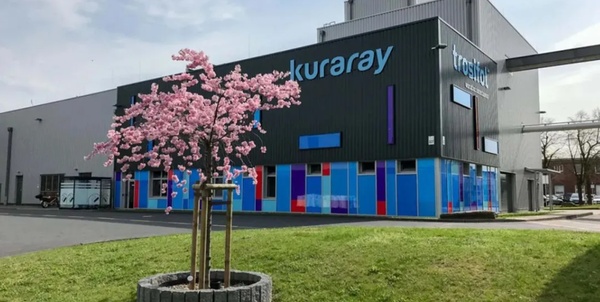5G Key Material Giant Takes a Bold Step Back! Kuraray Announces Discontinuation of "Black Tech" Product, What Signals Does This Send?
The global high-end materials market has been hit with a major announcement! On March 5th, Kuraray Co., Ltd. of Japan suddenly declared that it will officially cease production of its star product, Vecstar™ FCCL flexible copper clad laminate, in June 2026. This 'black technology' material, once highly anticipated, ultimately could not withstand the cold snap from the 5G millimeter wave market.
As the world's first leading company to successfully mass-produce liquid crystal polymer (LCP) films, Kuraray's strategic adjustment has caused a stir in the industrial chain. It is noteworthy that its core Vecstar™ LCP film production line will still be retained, and the film production capacity of the Saijo factory will not decrease but increase, indicating that the company is preparing for a new round of technological breakthroughs.

Time rewinds to 2018, when Kuraray announced the completion of its Vecstar™ LCP film capacity expansion, the entire electronic materials industry was taken aback. This groundbreaking technology precisely controls the film thickness between 25-250 micrometers, with a dielectric loss as low as 0.002 (10GHz), making it the 'golden film' of the 5G era.
Relying on this unique skill, Vecstar™ FCCL amazed the industry as soon as it was launched:
Ultra-high frequency signal transmission loss reduced by 40%
The coefficient of thermal expansion is only 1/10 that of traditional PI materials.
extreme stability with a dielectric constant fluctuation range of ±0.02
In the 5G millimeter wave equipment blueprint planned by giants such as Huawei and Apple, this material was once regarded as the 'ultimate solution' for antenna modules. The production capacity layout of 1.8 million square meters across two factories in 2020 further demonstrated Kuraray's ambition to dominate the world.
We set out three years ahead of the market, but the track has been slow to materialize. The senior management of Kuraray could not hide their regret in the announcement. As the focus of global 5G construction shifts towards the Sub-6GHz band, the commercialization process of millimeter wave has significantly slowed down. According to the latest report by ABI Research, the market size of millimeter wave equipment in 2023 shrank by 62% compared to expectations, with a cliff-like drop in the demand for key materials.
More severe challenges come from the rise of Chinese manufacturers. In recent years, companies like Shengyi Technology and Sino-UK Technology have made rapid progress in the field of LCP substrates, with their product performance approaching international advanced levels. Industry analysts point out: 'Under the dual pressures of narrowing technological gaps and increasing cost pressures, the strategic contraction of Japanese material suppliers has become inevitable.'
What is noteworthy is that Kuraray did not choose an 'across-the-board' exit. A two-year buffer period (2024-2026) is both a responsibility to existing customers and a window of opportunity for technology transition. Sources reveal that the company is accelerating the development of LCP film applications in emerging fields such as semiconductor packaging and medical sensors.
'This is not a retreat, but a tactical shift.' An analyst from a Japanese securities firm interpreted, 'When the 5G millimeter wave market truly takes off, Kuraray, which holds core film technology, can make a comeback at any time.' This strategic wisdom of 'preserving the green hills' may be the key to the century-long standing of Japanese material giants.
For downstream manufacturers, this production halt is both a challenge and an opportunity. A procurement director from a leading FPC company revealed: 'We have initiated a secondary supply development plan, and the validation cycle for domestic LCP film suppliers has been reduced by 60%.' Meanwhile, international giants including Toray and DuPont are accelerating the research and development of new high-frequency materials.
This industrial transformation triggered by the materials end may be reshaping the competitive landscape of the 5G era. When the dawn of millimeter waves truly arrives, who can seize the initiative on the new materials battlefield will likely determine the ultimate form of the next generation of communication equipment.
【Copyright and Disclaimer】The above information is collected and organized by PlastMatch. The copyright belongs to the original author. This article is reprinted for the purpose of providing more information, and it does not imply that PlastMatch endorses the views expressed in the article or guarantees its accuracy. If there are any errors in the source attribution or if your legitimate rights have been infringed, please contact us, and we will promptly correct or remove the content. If other media, websites, or individuals use the aforementioned content, they must clearly indicate the original source and origin of the work and assume legal responsibility on their own.
Most Popular
-

List Released! Mexico Announces 50% Tariff On 1,371 China Product Categories
-

Nissan Cuts Production of New Leaf EV in Half Due to Battery Shortage
-

New Breakthrough in Domestic Adiponitrile! Observing the Rise of China's Nylon Industry Chain from Tianchen Qixiang's Production
-

Dow, Wanhua, Huntsman Intensively Raise Prices! Who Controls the Global MDI Prices?
-

Mexico officially imposes tariffs on 1,400 chinese products, with rates up to 50%






